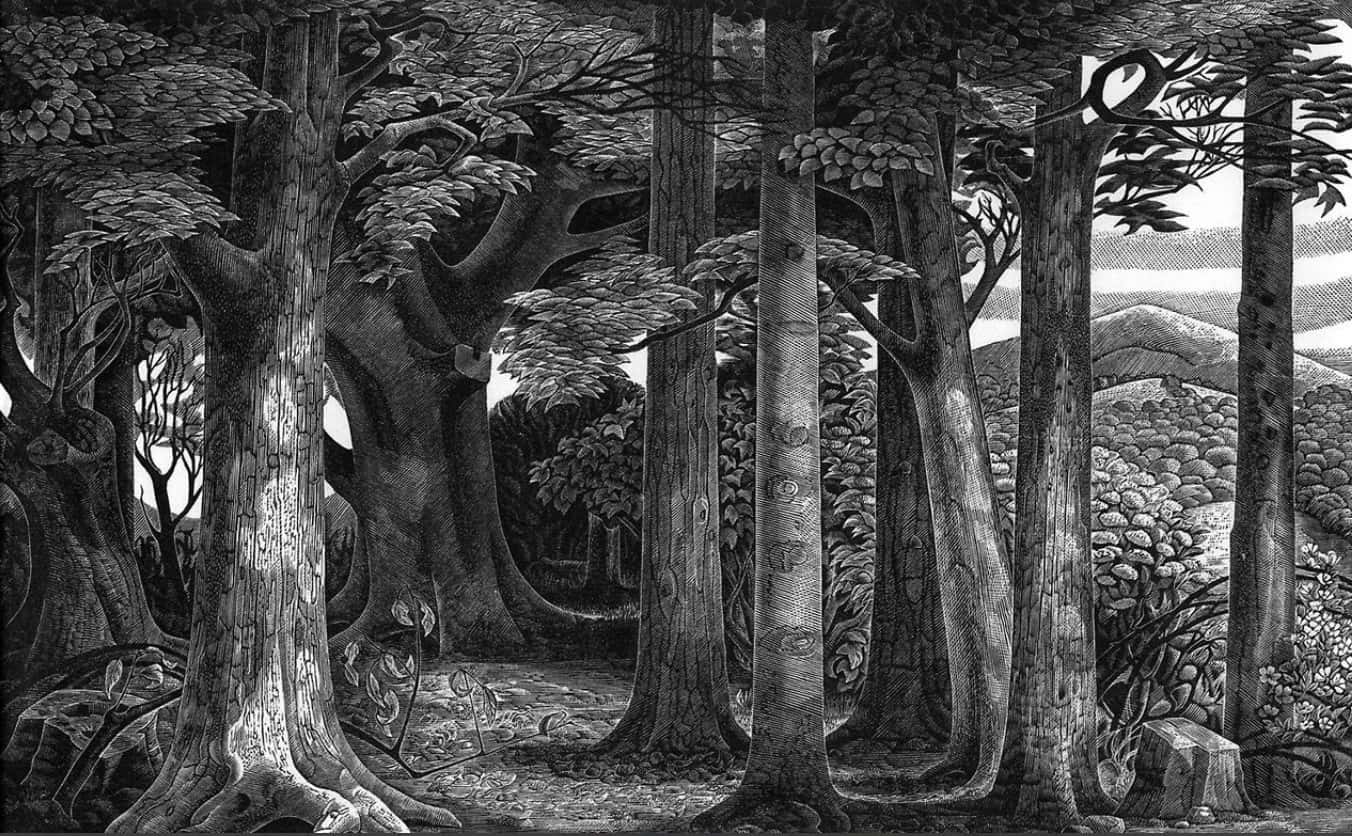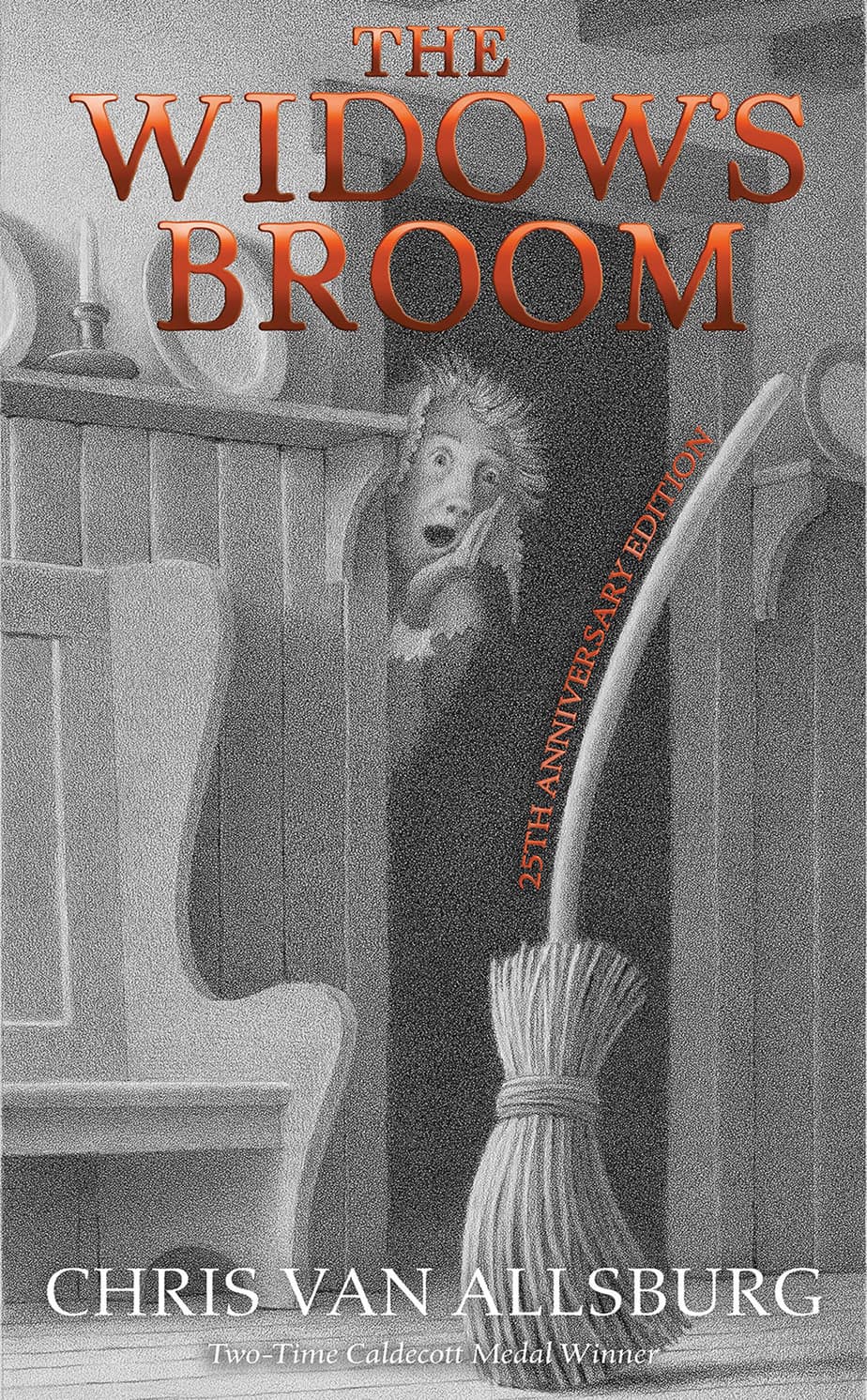“The Widow’s Broom” is a 1992 picture book by American author illustrator Chris Van Allsburg. Like many of Van Allsburg’s books, this one remains popular with teachers, partly because this is a storyteller who requires the reader to do a little work. Students can practise their inference skills in class.
Like all good stories which rely on reader imagination, this picture book can be interpreted in a number of ways.
THE DUAL AUDIENCE OF THE WIDOW’S BROOM
This is an example of a picture book which can be used one way in the infant classroom and quite differently in the senior Language Arts classroom.
A broom which ‘walks’, feeds chickens and plays piano will appeal to children at an early stage of development, which Piaget described as spatial egocentrism. Piaget also talked about child development and animism: the worldview that non-human entities possess consciousness and a life of their own. In modern picture books, animism tends to finds an outworking in animals who walk and talk like humans.
[A]nimism…is the belief that everything in nature has consciousness and life…. When Christopher Robin, the child in Winnie-the-Pooh, talks to his woodland friends, a donkey, a tiger, an owl, a pig, and a bear, he is engaged in what Jean Piaget has called ‘animism’. As do the majority of picture books that feature animal characters, a child engaged in animism, readily accepts that animals can and do behave as humans. An example is Olivia, Ian Falconer’s character who has resonated with adults and children alike and is the protagonist of [more than] five titles.
A Picture Book Primer: Understanding and Using Picture Books
Go back in time, to the early 1900s and before, and you’ll find plenty of children’s stories in which household objects come alive. This trend mostly seems to have gone away. (Likewise you won’t find so many moons with actual faces on them in contemporary picture books.)
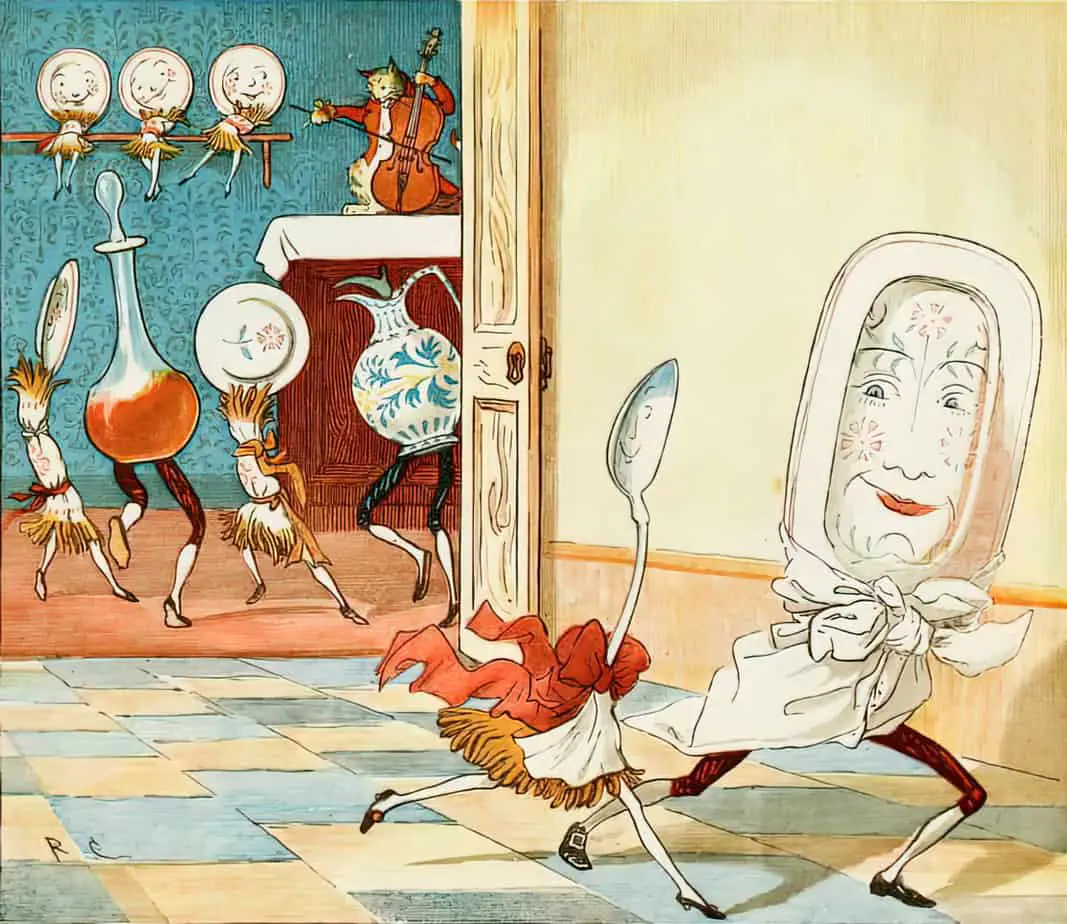
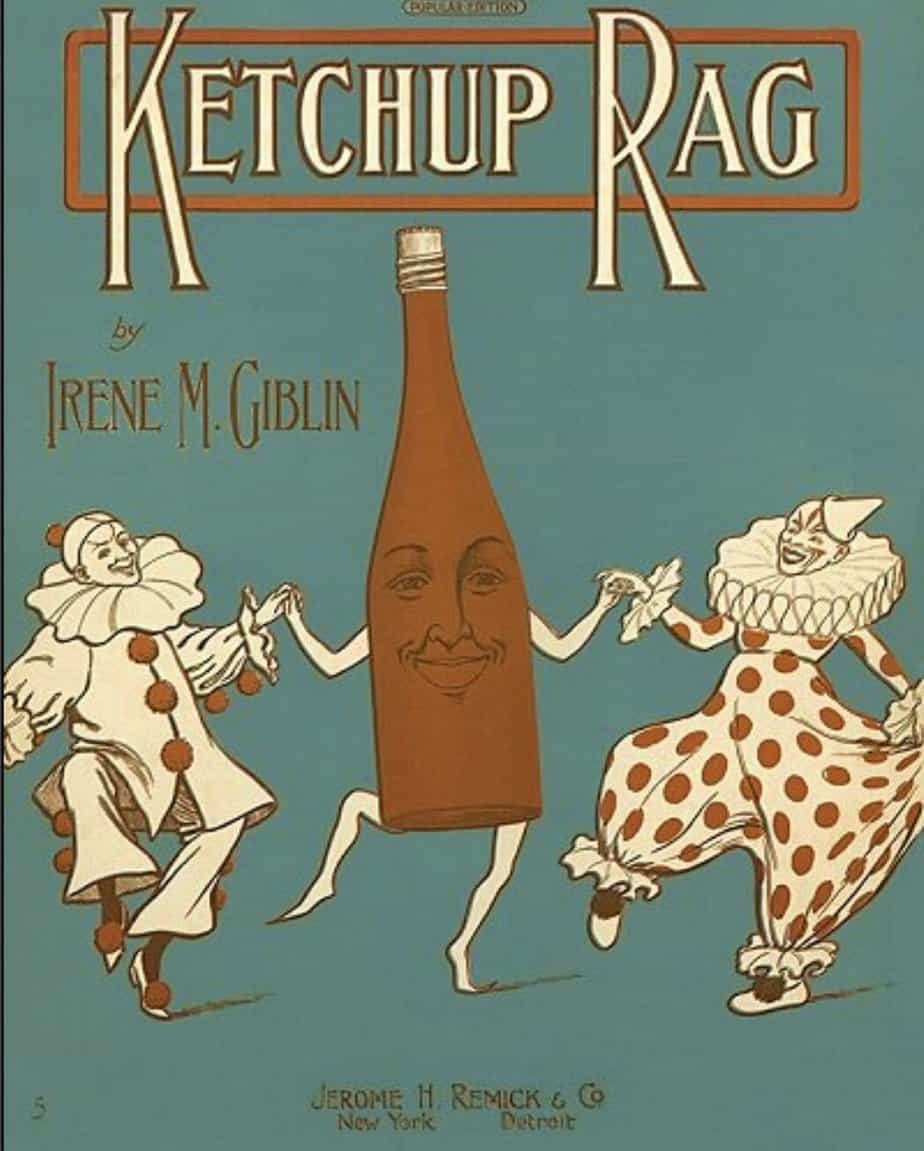
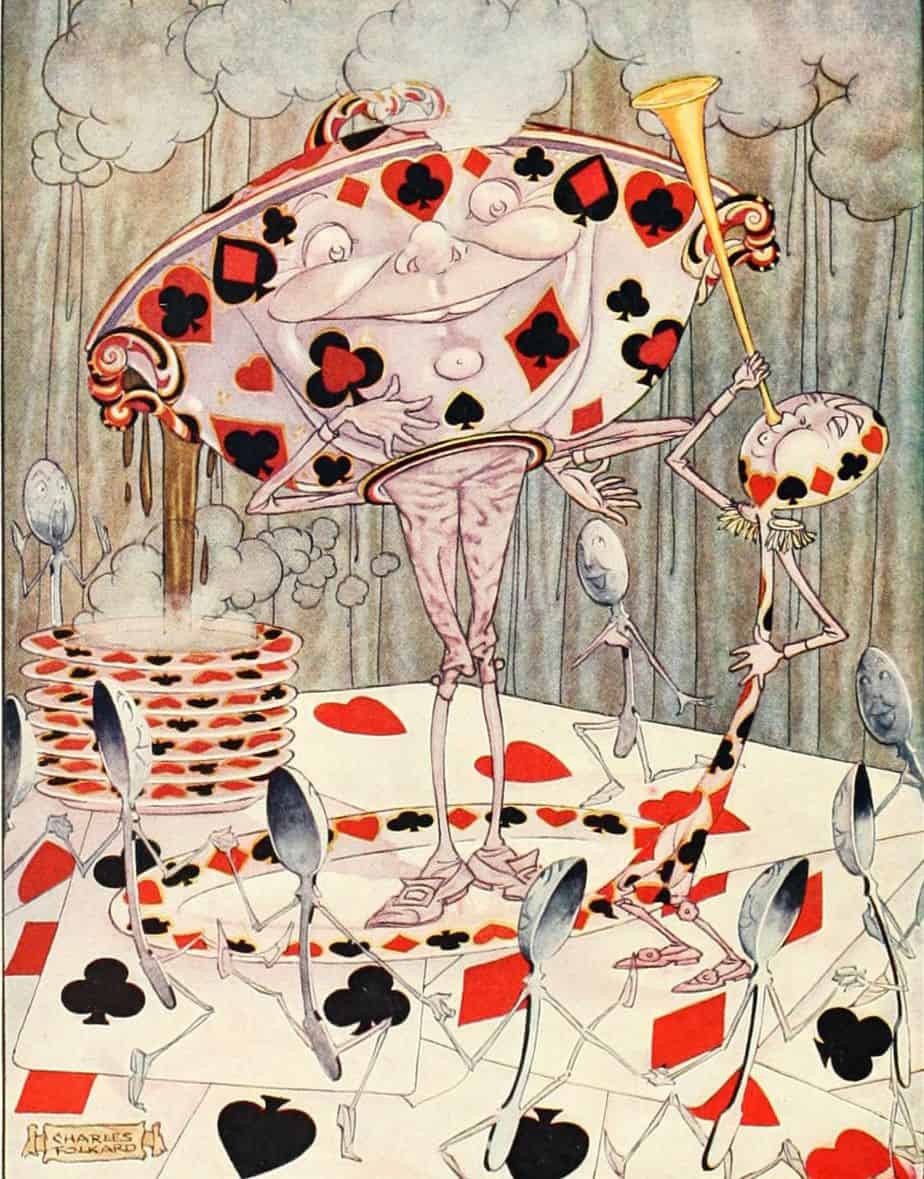
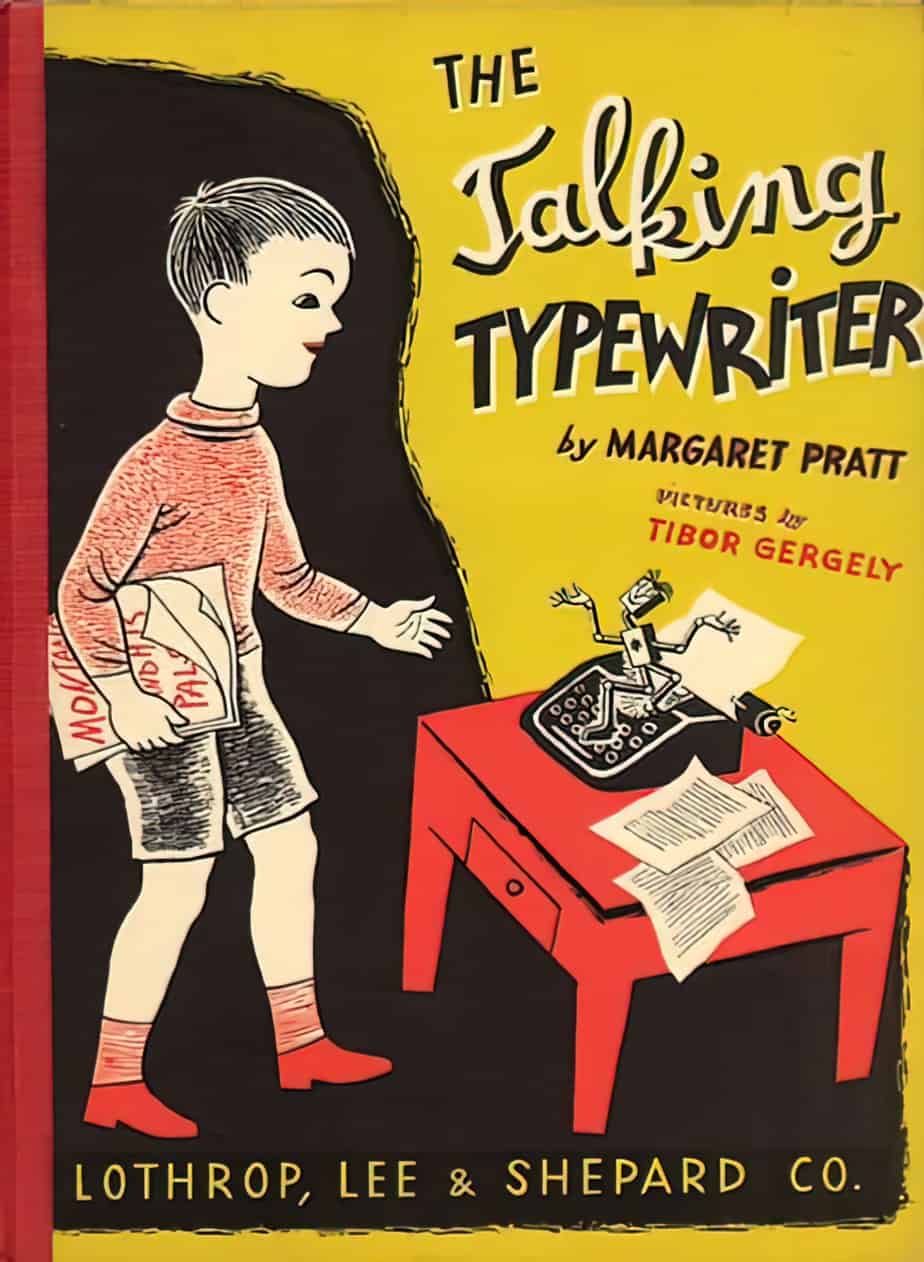
When picture book storytellers do utilise animism to bring household objects alive, the story therefore harks back to an earlier time. And in this particular story, Van Allsburg reminds readers of the pre-Christian world of superstition, along with modern ideas about Paganism, mixed in with fairytale. Therein lies the historical interest for older readers, culminating in a quite sophisticated message about humankind.
SETTING OF THE WIDOW’S BROOM
THE SHAPE OF THE BOOK
This is a picture book with a highly unusual shape; it is remarkably tall and thin. This is of course ‘broomstick’ shaped. The youngest readers may get this! But is there another reason or advantage to a tall, thin book, which older readers may pick up?
Picture book illustrators can be roughly divided into two groups:
- theatrical
- cinematic
The theatrical illustrators illustrate as if their characters and scenes are playing out on a stage. The ‘camera’ doesn’t shift much because there is no camera, only an audience, and they stay in their seats.
Cinematic illustrators utilise conventions which arose in 20th century cinema. They vary the distance between ‘camera’ and subject, change up the camera angles, and adjust lighting by making the most of shadows. Cinematic illustrators also play with framing. By creating a tall, thin, broomstick shaped picture book, Van Allsburg has narrowed the field of view for the reader. Subtly, this conveys the feeling that there is far more to the picture, and we are only getting a sliver of story. We must fill in the rest for ourselves. This conversation overlaps with film study.
THE UNIVERSAL FARM HOUSE
The arena for The Widow’s Broom is limited to an atemporal sort of farm house. I’m sure there are cultural markers which limit the potential locales for this particular farm house, but it is nonetheless Westerners’ ideas of an archetypal farm house, with technology from the 1950s or earlier. There’s an episode of The (Original) Twilight Zone (“The Invaders“)which utilises this ‘universal, archetypal’ farm house. The reveal is that the farm house (and its old woman inside) isn’t even on Earth. That’s how ‘universal’ such farmhouses are thought to be, at least in the imagination of a Western audience.
TIME
We are told that this story happened ‘a long time ago’, making this a fairytale setting. This happens in fall, and narrow bands of pumpkin illustrations decorate the pages of text. (I suspect this helps to sell the book as a Halloween story.)
TECHNOLOGY CRUCIAL TO THE STORY
The ‘technology’ crucial to this story is the broom, which appears to be a regular (archetypal) witchy kind of broom, but because it’s magical, it’s in fact far more advanced than the technology we enjoy today. (I was put in mind of a robot vacuum cleaner though, which didn’t exist in the early 1990s when Van Allsburg was working on this story.)

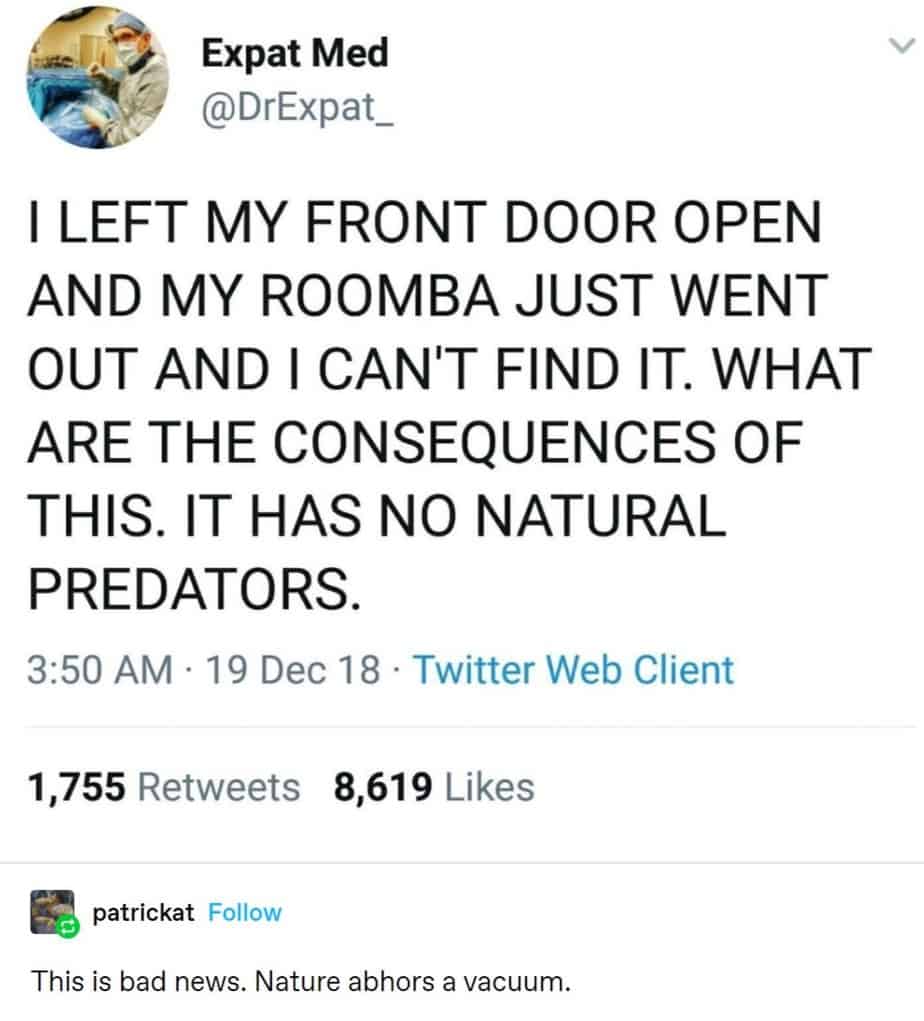
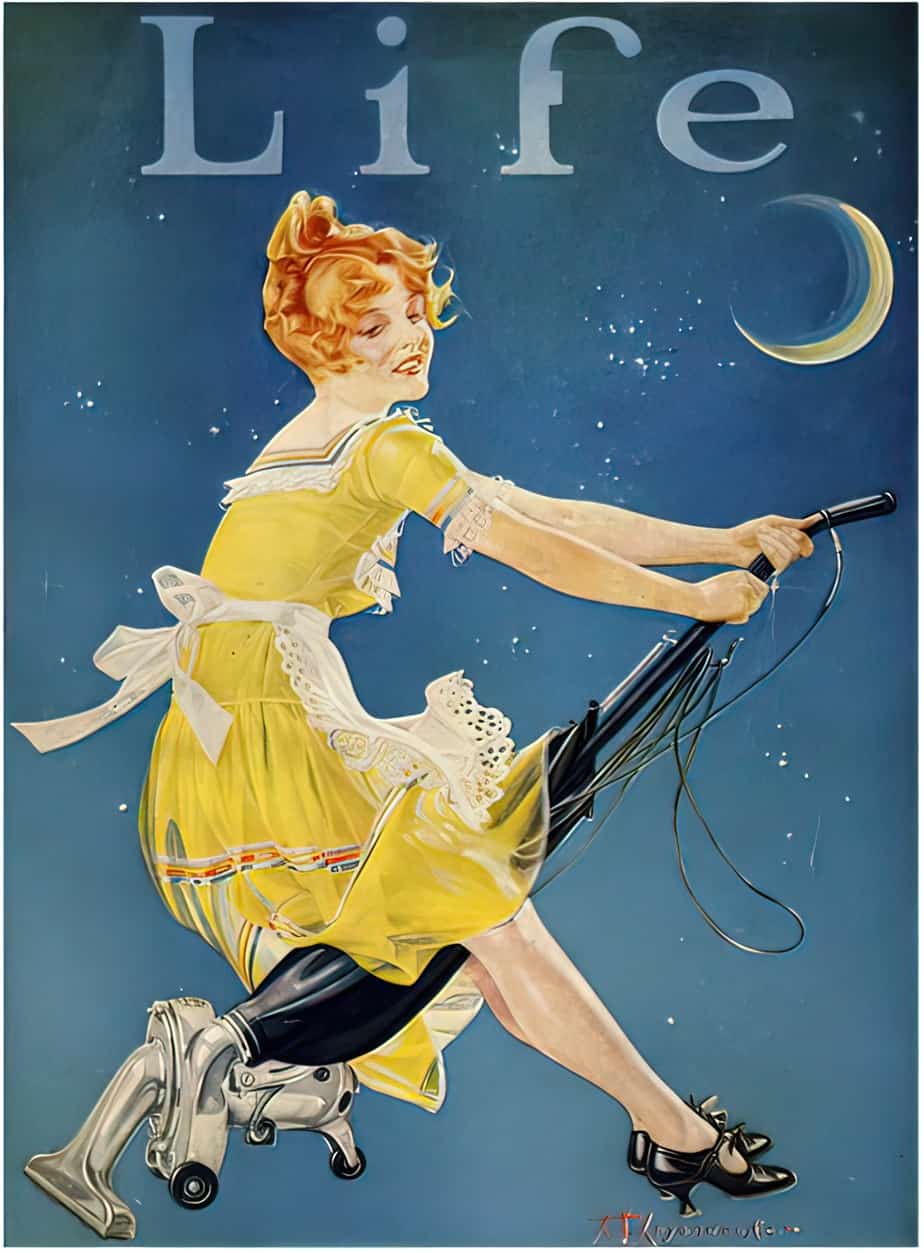
The Widow’s Broom opens in mythopoeic fashion, with a paragraph explaining how witches’ broomsticks work, in general. Van Allsburg is defining the magic of this particular story world for us right away. In most supernatural witch stories, broomsticks are the least of witches’ worries, and afford them the freedom to zoom magically from here to there. But for this story, Van Allsburg seems to have asked himself the question, “What if broomsticks worked a bit like private motor vehicles? Cars sometimes conk out. What would happen if a broomstick also conked out?”
The witch in the opening scene is shown from the back. We recognise her witch status from her hat and cloak, but she could be any witch. We have no backstory, but as an example of delayed decoding, I understand after reading this story that the broomstick is somewhat vengeful, and definitely doesn’t live by Isaac Asimov’s maxim made famous in I, Robot:
The Three Laws of Robotics
- A robot may not injure a human being or, through inaction, allow a human being to come to harm.
- A robot must obey orders given it by human beings except where such orders would conflict with the First Law.
- A robot must protect its own existence as long as such protection does not conflict with the First or Second Law.
Considering in hindsight how competent this broomstick is, this original witch did not treat the broomstick well. The broomstick waited until they were mid-air, then conspired to ditch its mistress.
For narrative purposes, this broomstick is a storybook robot; the fears humans have harboured about robots manifest in various stories across the 20th century. There are tentpole examples from children’s literature such as The Iron Giant by Ted Hughes (later adapted for the big screen). Chris Van Allsburg’s illustrations of the broom manipulating other objects by winding its wood around them like clamp-fingers remind me of 20th century factory illustrations housing creepy, personified machinery.
STORY STRUCTURE OF THE WIDOW’S BROOM
PARATEXT
A widow finds herself in possession of an extraordinary broom left by a witch who fell into the widow’s garden.
MARKETING COPY
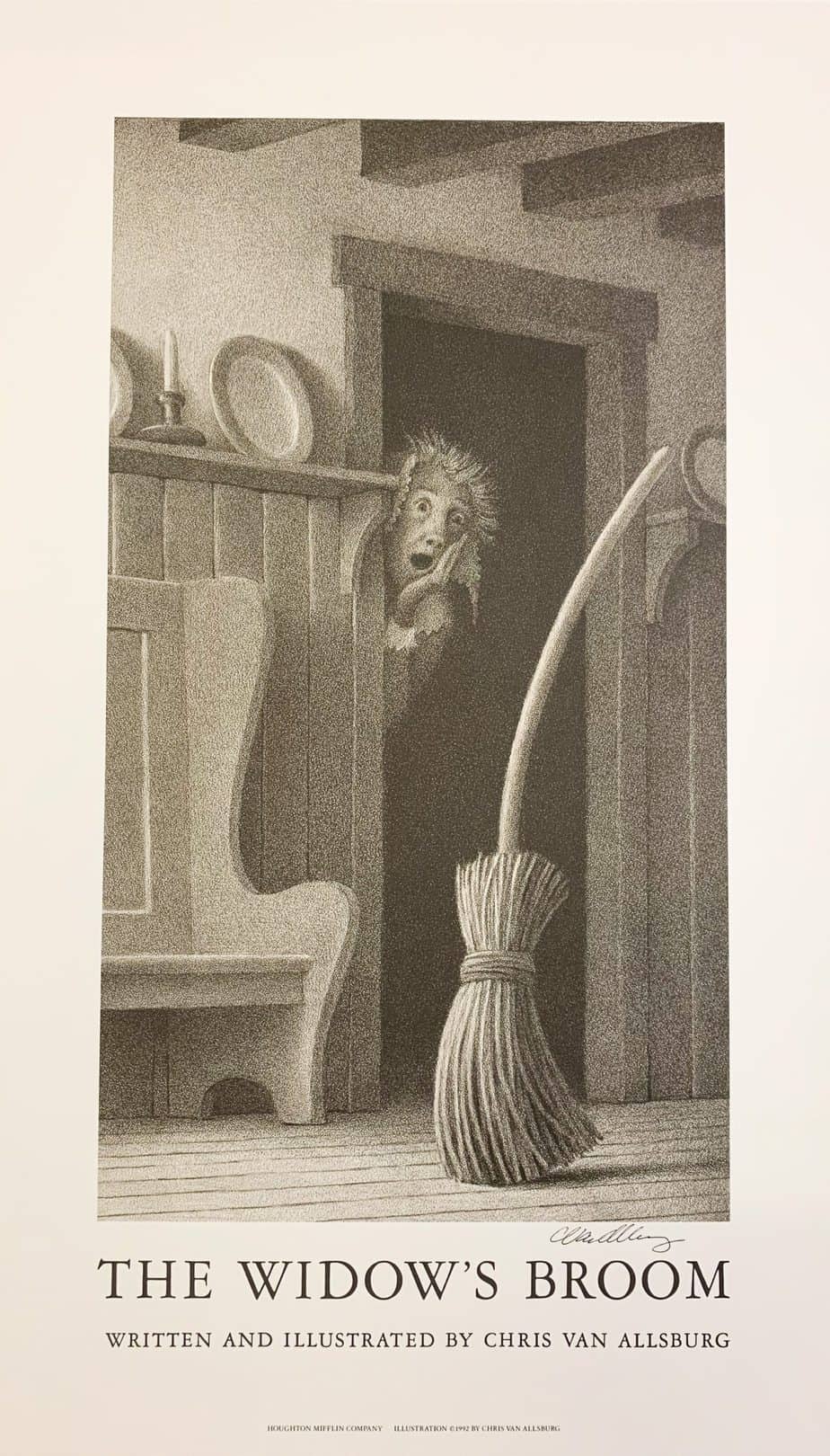
SHORTCOMING
Who is the main character of this story? The original witch opens the story, but soon disappears. She is what we might call a McGuffin character (to borrow and slightly repurpose Hitchcock’s terminology).
The viewpoint shifts to that of the widow, named and therefore individuated as Minna Shaw. This transition is done so seamlessly that, again, for narrative purposes, the widow equals the witch.
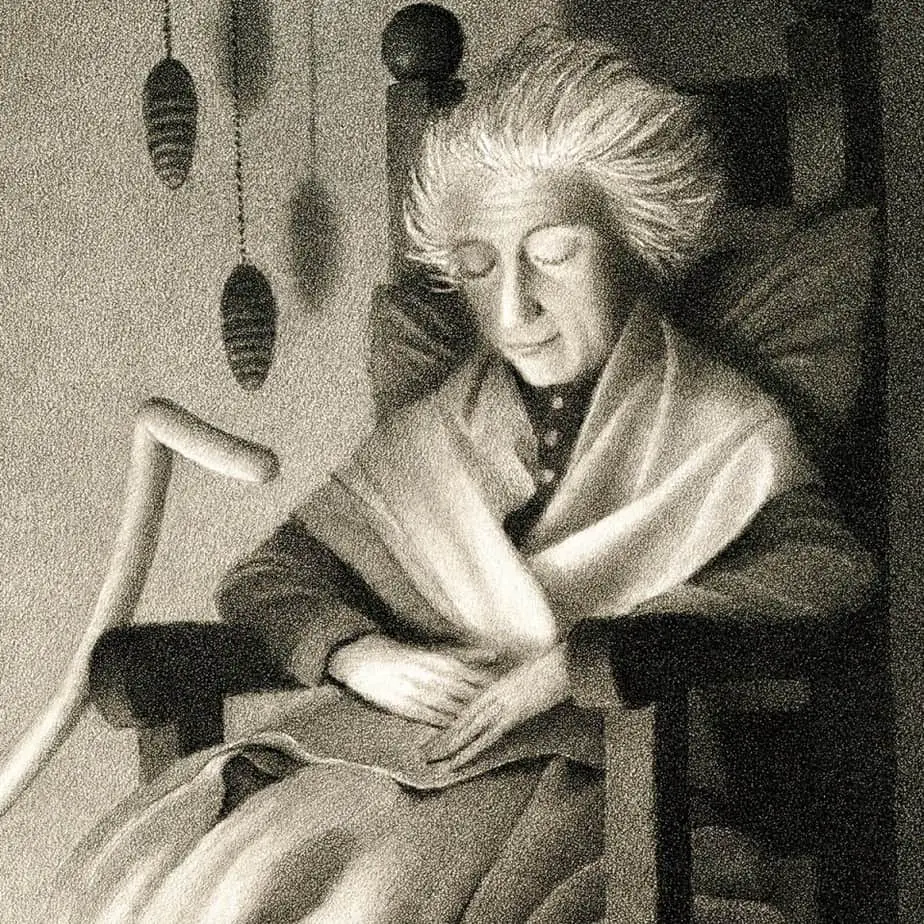
Another interpretation: The old woman doesn’t fall asleep; she dies after falling from the sky. The low angle shot of the up-lit witch looks like her supernatural resurrection. Using the hot red coal from the fire, the witch creates a fire which gives rise to a Phoenix, utilising very old fire symbolism (based on the observation that flame is the only time we ever see, visually, something physical transform into another state.)
The witch flying away could be coded as the old woman’s spirit.
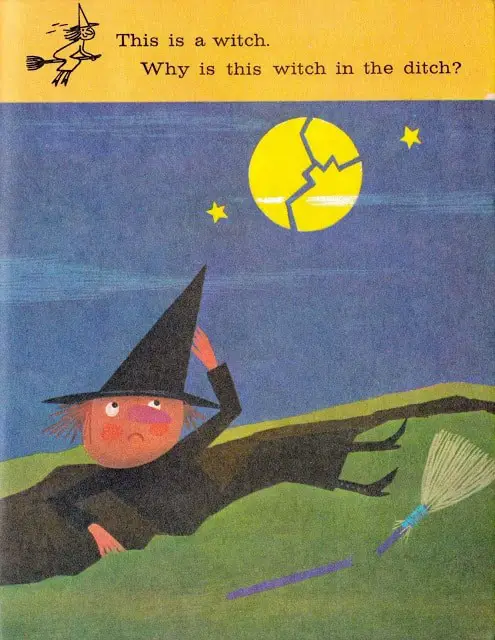
DESIRE
An ageing widow who scrapes by from day-to-day on a medium sized farmstead is in a vulnerable position. A farm requires a couple to run it; ideally including someone with the strength of your average young man, and with offspring/young people who take over the heavy physical work. Minna has no family.
Minna won’t be able to keep living here forever. Age and health will eventually fail her. It is therefore a huge deal that this magic force has appeared in her life to help her with the farm work.
We can assume that the widow’s main desire is to keep living in her home for as long as her health allows. This is a fairly universal desire and doesn’t need on-the-page explication.
Because the widow wishes only for maintenance of the status quo, the action is driven by the incomer. The broomstick.
OPPONENT
The suspense and interest of this story derives from the fact that an autonomous, helpful broomstick is novel, and we don’t understand its morality or its motivations. Is this an evil magical force, or a good one? What drives it?
It is gradually revealed that the broomstick has a strong moral centre. It is clearly from the Protestant tradition; it fills its days with hard work, and exacts punishment upon those who don’t live in this way. Even free-time is spent productively, in this case playing piano.
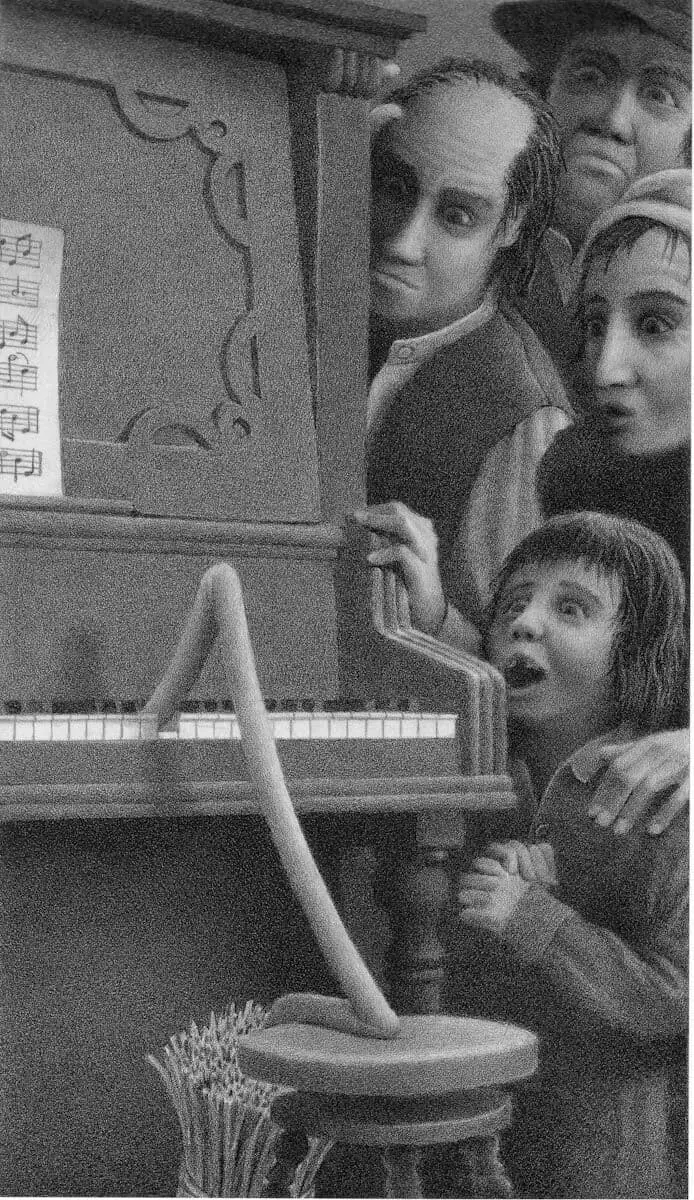
The broomstick will eventually reveal itself to be an ally. The opponents are the Spiveys, who live in ‘the only other house around’. They are a danger in the way anyone can be a danger when noticing something supernatural. The Spiveys have eight children, and it ‘was one of the eight Spivey children who saw the broom first’.
The boy tells his father, who is red-faced with anger. We deduce he is angry because he doesn’t want to be living next to anything, or anyone, with unpredictable supernatural powers.
During the Witch Craze, old women (though not just old, and not just women) were in danger of being coded as witches, especially those who were perceived as being a draw on society rather than contributing to its economy. Until just a few centuries ago, the existence of witches in any hamlet or village was accepted as fact. For more on that see A Glossary of Witch Words. Even in stories made for today’s audience, we take it as a given that supernatural discoveries must be hidden. Although we can’t be sure if a supernatural object is dangerous, we can be absolutely sure that scared humans always are.
CHRISTIANITY AND PAGANISM
Mr Spivey spreads news of the supernatural broom and considers it evil. In stories, when something strange happens, people tend to arrive from far and wide. We see this happen in, say, Charlotte’s Web.
Van Allsburg separates men from the women; the women disagree with the men in this partriarchal community. They can see the broom is a great help to Minna around the house. By inserting a gender divide in response to the broom, Van Allsburg is utilising an old trope (from the beginnings of Christianity) in which men represent the new Christian church, in direct conflict with the feminine, earthy and spiritual way of life it replaced: Paganism.
Historically, when one religion or way-of-life transitions to the next one (e.g. from Paganism to Christianity then later from Catholicism to Protestantism), practices once considered Orthodox are now considered not-Othodox (and also mysterious). Ancient practices, once considered normal are now considered witchcraft, or a contemporary synonym.
To take one historical example, in the Middle Ages, praying in Latin was associated with healing magic, but after the Protestant Reformation was now a sign that you were speaking to Satan. What does this have to do with Mr Spivey’s response in The Widow’s Broom? There is a historical precedent for people witnessing something new, mysterious and unexpected, then calling it the work of the devil.
Mr Spivey is thereby the archetype of the Christian patriarch, whereas the Widow is the archetype of the Pagan witch. Unlke Pagans, who were happy to say occult powers came from some uncatalogued minor deity, early Christians were freshly hung up on the question of where supernatural beings came from. In this story, no one knows or cares where the magical broomstick came from. But from about the 12th century onwards, Christianity was not historically able to sit happily with Pagan ideas because, according to Christianity, there can ony be one God. Anything witchy cannot possibly be permitted to exist alongside good Christian folk.
By the way, don’t fall into the trap of thinking that the ‘real’ historical witch comes from Roman Paganism. Instead, most historians of witchcraft say Christianity functioned to stigmatise what were once Orthodox Pagan beliefs by calling Orthodox Pagan beliefs witchcraft. That’s how that misconception came about. Paganism of the Middle Ages had nothing to do with the modern storybook conception of witches and witchcraft. (If you’re into this stuff, Scholasticism had far more to do with the witch craze than Paganism.)
PLAN
It seems that the broomstick’s plan is well-thought out:
Ditch the original witch. Find a nice old-lady who’ll appreciate the extra help. Live with her forever, earning your keep, and turn her into your new witch.
But the reversal reveal at the end tells the reader this was all the widow’s plan, and the broomstick is simply the tool she has chosen to haunt, probably because she can continue on doing her regular work.
Woman equals broomstick equals witch.
Across cultures, broomsticks are heavily imbued with superstition. In this story, the broomstick stands metonymically for ‘housework’ or ‘women’s work’. For this exact reason, broomsticks became associated with the witch archetype in the first place.
THE BIG STRUGGLE
The mischievously cruel Spivey boys who live nearby taunt the broomstick in what child readers will recognise as a workaday bullying scene. Unlike similar situations in real life, the broomstick is able to exact quick and effective revenge. (For more on revenge and punishment in children’s literature see this post.)
DON’T KILL THE DOG, EXCEPT SOMETIMES
I find it interesting that Van Allsburg chose to sacrifice the boys’ pet dog in this story. Dogs are generally considered sacred by all writers, not just by writers of children’s stories. “Don’t hurt the dog” is a widely understood maxim. Of course, there are no hard and fast rules when writing stories, and I’m sure you’re thinking of some tentpole exceptions (Old Yeller, Where The Redfern Grows) in which dogs die at the end. Those are different kinds of stories, in which we are encouraged to consider the importance of dogs in our lives, and their tragically short lives in comparison to ours. The dog in this story has a small part, and although briefly savage, is treated brutally. The darkness in this postmodern picture book is straight out of an earlier age of fairytale. Van Allsburg softens nothing.
In any case, the plot requires something dark and genuinely dangerous to convince the readership that a broomstick can successfully scare the widow’s neighbours right out of town.
Then, the dog is found ‘healthy but hungry’. Phew. The dog has indeed been spared. (And the dog’s death has done its job for the story.)
Now for the second phase of the battle. Regular readers of Van Allsburg’s work will have predicted this, because the dog is based on a real dog owned by Van Allsburg’s brother -in-law. The real dog is called Fritz, and makes an appearance in every work (sometimes as a toy).
Men arrive at the widow’s house and insist she burn the broom. This is the first time we’ve seen Minna in a while, though the men are foregrounded, sitting in a cart. We see Minna on the horizon, turned away, as if at a funeral.
ANAGNORISIS
Like a horror villain, this supernatural force cannot be killed. It moves into the forest, and carries an axe. It is white.
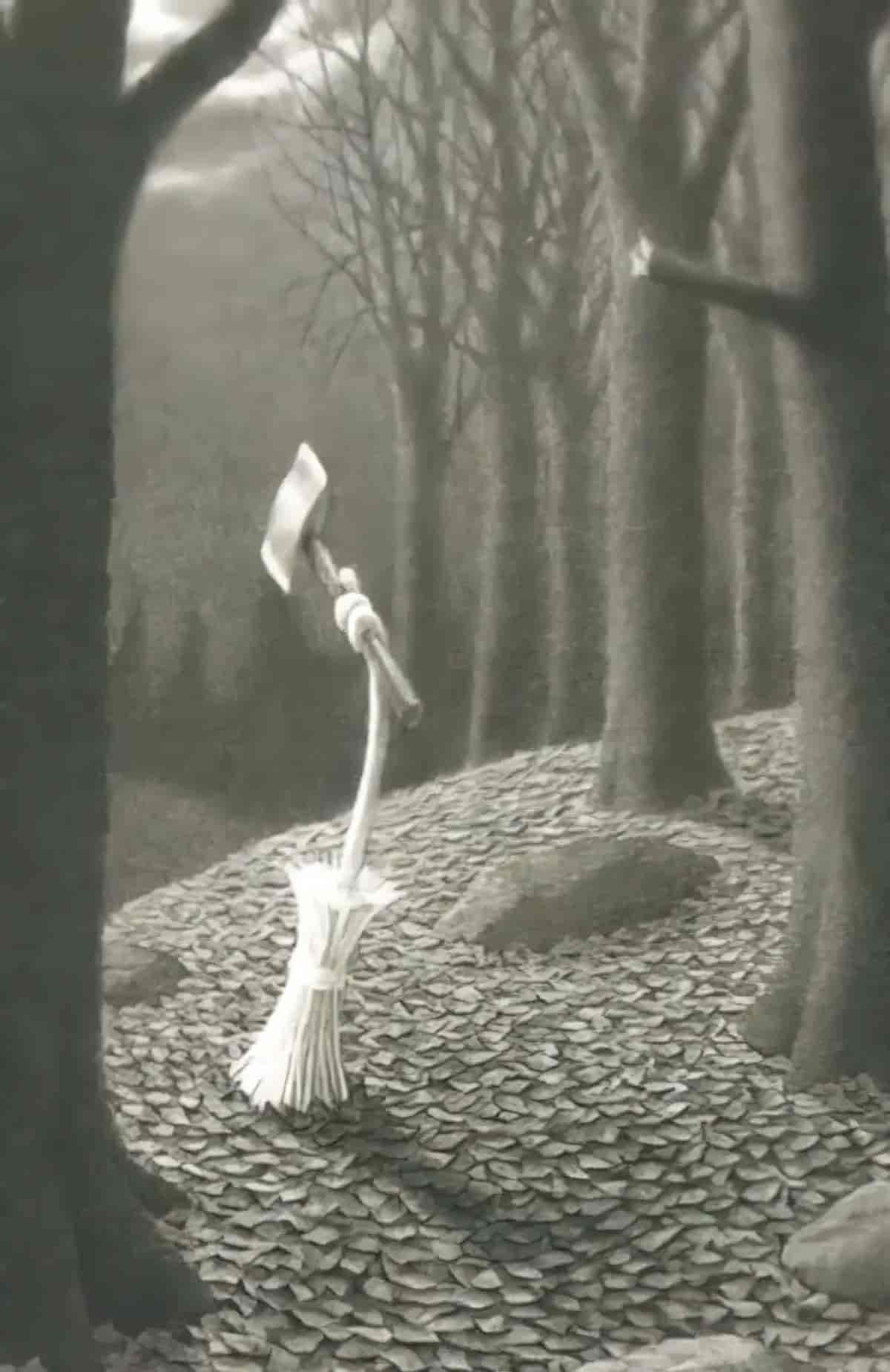
The author is making use of established folk tales of England and North America. As an example:
D1600-1699. Chracteristics of magic objects
D1600. Automatic object.
D1601. Object labors automatically.
D1601.10. Self-cooking vessel.
D1601.10.1. Self-cooking pot. Type 568.
D1601.14. Self-chopping axe. NEW JERSEY: Halpert Pines 228-30, 554, 1947 (four variants)
D1601.18. Self-playing musical instruments.
D1601.18.1. Self-ringing bell. CALIFORNIA: Hustvedt and Taylor CFQ 4:21-23, 1945
D1602. Self-returning magic object.
in Baughman’s Type and Motif Index of the Folktales of England and North America by Ernest Warren Baughman 1966 (108 of 606). Searchable version here.
The broomstick, which has been hiding out in the woods until the coast is clear, returns to the widow’s house, and we learn that she has painted it white. It’s possible the broomstick isn’t doing any of this — the widow is simply spreading rumours, and because the Spiveys have already been caught up in one sort of story, they’re easily caught up in another.
This says something true and dangerous about human kind, as observed by Carl sagan in the last interview he ever gave:
One of the saddest lessons of history is this: If we’ve been bamboozled long enough, we tend to reject any evidence of the bamboozle. We’re no longer interested in finding out the truth. The bamboozle has captured us. It’s simply too painful to acknowledge, even to ourselves, that we’ve been taken. Once you give a charlatan power over you, you almost never get it back.
Carl Sagan
Why did she paint it white? For plot reasons: The broomstick is to be read as a ghost, by us and also by the Spiveys. Illustrators commonly depict ghosts as white or translucent (as you can see in this collection of ghost illustrations).
There’s another established convention seen in, say, ‘white hat, black hat’ cowboy movies. The widow clearly considers the broomstick to exist on the side of ‘good’ in story of dualist morality: good, evil, and nothing in between. Minna lives in a white house. She wears a white cloth on her head, in contrast with the men who wear dark hats and insist the broomstick be destroyed. The strong light and dark of these illustrations, seen in the almost chiarascuro pencil work of some pages, reflects the dualist nature of the story’s underlying morality. (Van Allsburg used lithography [litho] pencil, which can achieve a very dark mark.)
Making use of film terminology, this picture book utilises a reversal as a reveal. A reversal is a type of reveal which is so large it causes us to re-read the story differently. The widow has been the master of proceedings all along. The magic broomstick is not a ghost; she painted it white. This gives the widow more agency than she had before, and is therefore satisfying for the reader.
NEW SITUATION
The Spiveys have been successfully spooked by the broom who taps an axe against their front door in the middle of the night. I don’t entirely blame them. They move out, and try to convince the widow to join them. Minna refuses. She is tied to the house, and also, as we now know, she’s the mastermind behind getting rid of them.
EXTRAPOLATED ENDING
Although the broom is no ghost, there is clearly plenty of ‘real’ magic within the world of the story.
It would be interesting to know what happens to this (ghost?) widow-witch now that she’s got her broomstick for a companion. Does the magic help her to grow younger, like in that Cocoon movie from the 1980s? The beginning seems to suggest it would, since the ‘original’ witch wrapped herself up in her cloak, chrysalis-like, and after a single night was fully healed after what would normally be a fatal tumble.
Does Minna start riding the broom at night? Does she replace her neighbours with a coven? Is this how old women become witches, according to the legend laid out in this story? Witches are chosen rather than born into the craft (kind of like vampires are ‘chosen’ by creatures already ‘infected’ with the magic)?
The message of this story may have links to historical oppression, but can be simplified to this: Humans fear what we don’t understand. Be kind.
More complex: If we choose not to interrogate the stories we tell ourselves about others, we are in danger of falling victim to any number of false narratives. Some of those will directly impact ourselves.
RESONANCE
The reality that people are susceptible to fake news, and suspicious of newcomers, was never more relevant than it is today.
COMPARE AND CONTRAST
If you enjoy this style of story and illustration, be sure to check out the postmodern picture books of Anthony Browne (British) and Shaun Tan (Australian). These authors are equally popular in classrooms and also with adults, whose illustrations are so beautiful their picture books double as coffee table books.
Anthony Browne’s Hansel and Gretel is especially interesting to pair with “The Widow’s Broom” because his illustrations turn the evil stepmother into the same person as the witch. Both stories are saying something about how old women are witches, or witches are old women — in the popular historical imagination, there’s no clear difference.
Another similar picture book is John Brown, Rose and the Midnight Cat, also featuring an old woman living alone, also featuring a deep reading in which the old woman falls asleep and dies, but who is resurrected as a kind of ghost for young, more naive readers. Even more than this one, the storyline is completely different depending on your ability (or willingness) to delve into metaphor.
If you enjoyed the illustrations in “The Widow’s Broom”, check out the wood engravings of British artist Monica Poole.
